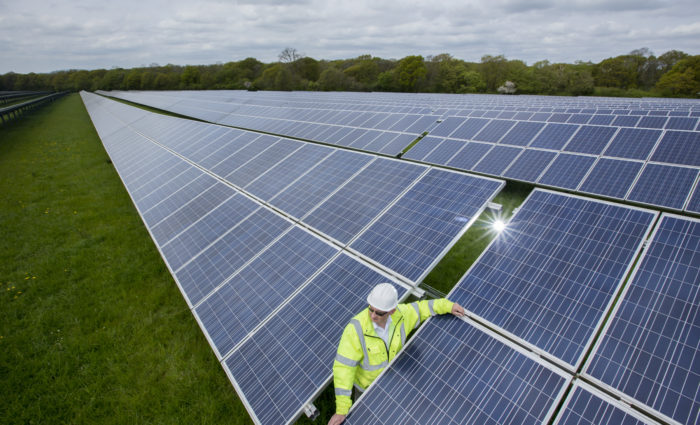
The company’s UK assets accounted for 76% of electricity generated by the total portfolio in 2021. Image: Foresight.
High power prices helped bolster Foresight Solar Fund’s financial results for 2021, the company confirmed yesterday (9 March).
Following the release of its Q4 2021 NAV update in February, the solar fund confirmed that due to strong UK power prices, above budget inflation and a reduction in discount rates, its NAV increased by 12.9% per share to 108.2 pence. This put total NAV at to £660.0 million as of 31 December 2021, up from £582.2 million in Dec 2020.
Power prices surged towards the end of 2021 in particular due to a gas shortage that was driven by a number of factors, including strong demand from Asia, reduced inventories and recovering economic activity following the COVID-19 pandemic. This meant that the average power price achieved across Foresight’s UK portfolio including fixed price arrangements was £67.93/MWh the company said, in comparison to £37.05/MWh in 2020, an increase of 83% year-on-year.
Foresight’s portfolio is made up of 74% fixed contracted revenue, and 26% merchant risk. Around 51% of its revenue came from subsidies and the remaining 49% from the sale of electricity.
Speaking to Solar Power Portal, Ross Driver, director at Foresight Solar, said: “I think the strategy has literally paid dividends in 2021. By keeping about half of the electricity sales as merchant, where we could foresee an improving power price environment, we've benefited from that.”
These high power prices have impacted fixed revenues going forwards as well as providing ample opportunity in the merchant space. For example Dividend cover for 2021 was 1.21x and for 2022 is forecast as 1.25x based on contracted revenues alone.
“So we're not stating the exact target at the moment [for our dividend cover], but once you factor in merchant solar prices for the year, at the levels that we've been fixing up to about £240/MWh, you can get an idea of what the dividend cover will be,” added Driver.
Power prices have risen again in the first few months of 2022, with the market becoming increasingly volatile in recent weeks following the invasion of Ukraine.
Driver said that the company was not trying to “second guess what the market's doing”, however, but continuing to have a strong focus on contracted revenue, in particular corporate PPA’s, which is an exciting growth area for the solar market in the UK at the moment.
“You have blue chip companies that we're seeking out, banks and government sector entities coming out. So all counterparties with high credit ratings. We think that there is a private sector solution and that solar in the UK does not require subsidies for the next stage of growth.”
The company is looking to further its portfolio of projects throughout 2022, and in February secured a new three-year facilities agreement that includes a committed multicurrency Revolving Credit Facility of £150 million and an uncommitted accordion facility of up to £30 million.

